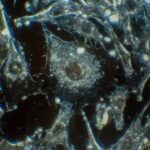
Oral submucous fibrosis is one of a group of oral potentially malignant disorders. It affects mainly southeast Asian countries but is also reported in South Africa and Saudi Arabia. Case numbers are low in European countries and mainly in those of Asian origin. The aetiology of oral submucous fibrosis is multifactorial although the use of areca nut is considered to be an important factor. The premalignant nature of oral submucous fibrosis was first noted in the 1950s and various estimates of malignant transformation rate have been reported in the literature.
The aim of this review was to establish an overall malignant transformation rate (MTR) for oral submucous fibrosis (OSF).
Methods
A review protocol was registered on the PROSPERO database. Searches were conducted on the Cochrane Database/Cochrane Central, PubMed, Web of Science, PsycINFO and Google Scholar databases. Prospective and retrospective cohort studies in any language were considered. No randomised-controlled clinical trials (RCT) were identified. Two reviewers independently screened and selected studies and extracted data. Risk of bias was assessed using the Newcastle-Ottawa Scale (NOS) independently by 2 reviewers and cross-checked by a third reviewer. A random-effects meta-analysis was undertaken.
Results
- 16 studies involving a total of 8516 patients were included.
- A total of 780 malignancies were seen and the malignant transformation rate (MTR) ranged from 0 -26.6% in the individual studies.
- The raw cumulative MTR = 9.2% (780/8516).
- Meta-analyses found the overall MTR = 0.06 (95% CI, 0.02–0.10) with some variation across groups see table).
| No. of studies | % Malignant transformation (95%CI) | |
| Chinese | 5 | 2% (1% to 2%) |
| Indian | 5 | 8% (3% to 14%) |
| Pakistan | 1 | 27% (25% to 29%) |
| Taiwanese | 5 | 6% (3% to 10%) |
| Overall | 16 | 6% (2% to 10%) |
Conclusions
The authors concluded: –
Overall, the MTR was calculated at 6% (proportion 0.06, 95% CI 0.01–0.10) whilst the crude rate of transformation (raw cumulative rate of transformation of OSF for all data sets combined) was calculated at 9% (SD + 0.1%). The high level of heterogeneity impacted on calculated MTR and reinforces the need for standardisation of reporting. Regional/ethnic variations in the likelihood of malignant transformation of OSF was also noted with Chinese = 0.02 (95% CI 0.01–0.02), Taiwanese = 0.06 (95% CI, 0.03–0.10), Indian = 0.08 (95% CI, 0.03–0.14) and Pakistani = 0.27 (95% CI 0.25–0.29). Additional re- search is required to ensure robustness of statistical analysis given study heterogeneity and lack of standardised reporting in some countries.
Comments
This review is one of a number that recently looked at MTR in oral submucous fibrosis that have all produced similar estimates for the overall percentage (see table below).
| Publication | % Malignant transformation (95%CI) * |
| Murthy V. et al 2022 | 6% (2% to 10%) |
| Nayanar G. et al 2022 | 5.5% (3.9% to 7.2%) |
| Kujan O. et al 2021 | 4.2% (2.7% to 5.6%) |
| Iocca O. et al 2019 | 5.2% (99% CI: 2.9% to 8.0%) |
*Unless where indicated
The studies included in this review were published between 1964 and 2020 with sample sizes ranging from 25 to 2333 patients. Follow-up periods range from 6-15 years, but a majority of studies do not report the length of follow up. Nine of the included studies were prospective and many of the studies did not report on the male to female ratios. Consequently, a majority of the included studies scored low on the NOS. Well designed and reported long-term prospective studies are needed to provide additional clarification of MTR in oral submucous fibrosis.
Links
Primary Paper
Murthy V, Mylonas P, Carey B, Yogarajah S, Farnell D, Addison O, Cook R, Escudier M, Diniz-Freitas M, Limeres J, Monteiro L, Silva L, Fricain JC, Catros S, Fenelon M, Lodi G, Lombardi N, Brailo V, Ariyaratnam R, López-López J, Albuquerque R. Malignant Transformation Rate of Oral Submucous Fibrosis: A Systematic Review and Meta-Analysis. J Clin Med. 2022 Mar 24;11(7):1793. doi: 10.3390/jcm11071793. PMID: 35407401; PMCID: PMC8999767.
Other references
Dental Elf – 8th Aug 2018
Kujan O, Mello FW, Warnakulasuriya S. Malignant transformation of oral submucous fibrosis: A systematic review and meta-analysis. Oral Dis. 2021 Nov;27(8):1936-1946. doi: 10.1111/odi.13727. Epub 2020 Dec 9. PMID: 33205543.
Iocca O, Sollecito TP, Alawi F, Weinstein GS, Newman JG, De Virgilio A, Di Maio P, Spriano G, Pardiñas López S, Shanti RM. Potentially malignant disorders of the oral cavity and oral dysplasia: A systematic review and meta-analysis of malignant transformation rate by subtype. Head Neck. 2020 Mar;42(3):539-555. doi: 10.1002/hed.26006. Epub 2019 Dec 5. PMID: 31803979.
Nayanar, G, Reddy, MGS, Kakodkar, P & Dony, EC Malignant transformation rate of oral submucous fibrosis: A systematic review and meta-analysis. Oral Surg. 2022; 00: 1– 8. https://doi.org/10.1111/ors.12771
Dental Elf – Oral Submucous Fibrosis blogs
Picture Credits
Photo by National Cancer Institute on Unsplash
